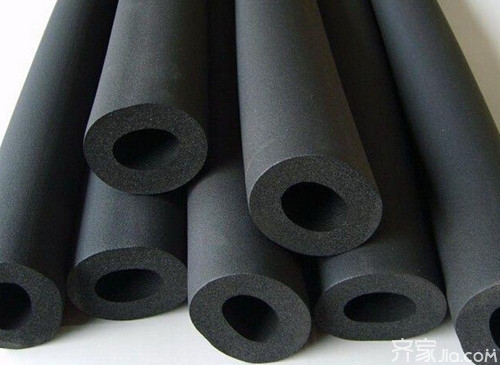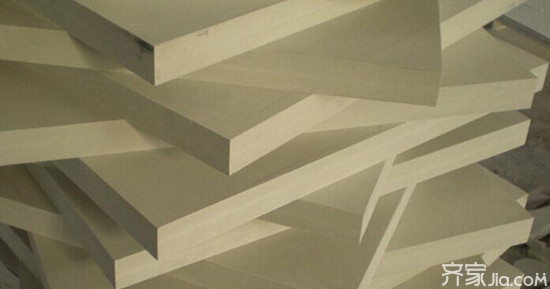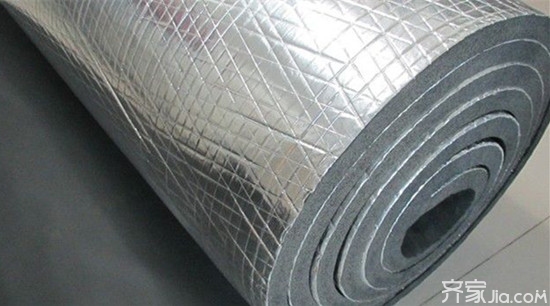In construction, the material used to control the outflow of heat in the room is customarily called an insulating material, and the material that prevents the outdoor heat from entering the room is called an insulating material. Insulation, thermal insulation materials are collectively referred to as thermal insulation materials. So, what are the types of insulation materials ? Don't worry, here's a look at Xiaobian. What kinds of insulation materials are there? Commonly used thermal insulation materials can be divided into organic and inorganic categories according to their composition. According to its shape can be divided into fibrous, porous microporous, bubble, granular, lamellar and other kinds, following a brief introduction to some of the more common materials. An inorganic fibrous insulation material 1, mineral wool, rock wool and its products Mineral wool is an industrial waste slag as the main raw material, by melting, by the blowing or centrifugal method and made of cotton insulation material: rock wool is made of natural rock as a raw material of mineral wool. Commonly used rocks such as basalt, Hui Greenstone, amphibolite and so on. Characteristics of mineral wool: Mineral wool and products are high quality insulation materials and have been used for more than 100 years in production and application history. Its light weight, heat preservation, heat insulation, sound absorption, chemical stability, non-combustion, corrosion resistance, and rich source of raw materials, the cost is low. The main purpose of mineral wool: Its products are mainly used for thermal insulation and sound absorption in dry building walls, roofs, ceilings, etc., and can also be made of waterproof felt and pipe casing. 2, glass wool and products Glass wool is a fibrous material made by melting glass raw materials or cullet, and it includes both short cotton and ultra-fine cotton. Characteristics of glass wool: It can maintain good heat preservation performance under high temperature and low temperature; It has good elastic recovery force; It has good sound-absorbing performance and good sound-absorbing effect for various sound waves and noise; It has good chemical stability and no aging phenomenon for a long time. The use of the same performance, product thickness, density and shape can be processed according to user requirements. Main application: Short cotton is mainly made of glass wool felt and roll felt, used for heat insulation and sound insulation of buildings, heat insulation and sound insulation of ventilation and air conditioning equipment. Superfine cotton is mainly made of glass wool board and glass wool tube cover. It is used for heat preservation and sound insulation of dry large-scale recording studios, cold storage, warehouses, ships, aviation, tunnels, and house building projects. It can also be used for heating, water supply, power and other equipment. Pipe insulation. 3, aluminum silicate wool and products Aluminum silicate wool is aluminum silicate fiber with diameter of 3~5μm, also called refractory fiber. It is made of high-quality coke precious stone, high-purity alumina, silica, Zircon sand, etc. as raw materials. Select appropriate processing and resistance. The inorganic material that is melted and blown in the furnace or thrown silk to make the chemical composition and structure the same and different dispersion materials are polymerized and fibrillated is a new type of high-quality thermal insulation material recognized at home and abroad. Features: Light weight, high temperature resistance, low heat capacity, low thermal conductivity, excellent thermal stability, excellent tensile strength and excellent chemical stability. Main uses: Widely used in high temperature insulation of industrial kilns in electric power, petroleum, metallurgy, building materials, machinery, chemicals, ceramics and other industrial sectors as well as for filtering and sound-absorbing materials. 4, asbestos and its products Asbestos, also known as "asbestos," is a commercial term referring to silicate mineral products that have high tensile strength, high flexibility, resistance to chemical and thermal attack, electrical insulation, and spinnability. It is a general term for natural fibrous silicate minerals. Features: High fire resistance, electrical insulation and thermal insulation. It is an important fire protection, insulation and insulation material. Main applications: Mainly used in dry mechanical transmission, braking and heat preservation, fire prevention, heat insulation, anti-corrosion, sound insulation, insulation and other aspects, of which the more important ones are the automobile, chemical industry, electrical equipment, construction and other manufacturing sectors. 5, inorganic microporous materials (1) Diatomaceous earth: Diatomaceous earth is composed of amorphous SIO2 and contains a small amount of fe2o3, CaO, MgO, and al2o3; and organic impurities. Features: Diatomaceous earth is usually light yellow or light gray, soft, porous and light, its porosity is 50% to 80%, so it has good thermal insulation properties. The chemical composition of diatomaceous earth is a water-containing amorphous SIO2, and its maximum use temperature can reach 900°C. The main purpose: used in industry as insulation materials, filter materials, fillers, abrasive materials, water glass raw materials, decolorizing agent and catalyst carrier. (2) Calcium silicate and its products: Calcium silicate insulation is made of 65% silica (quartz sand, diatomaceous earth, etc.), 35% calcium oxide (also useful for hydrated lime, carbide slag, etc.) and 5% reinforcement. Fiber (such as asbestos, glass fiber, etc.) as the main raw material, through a stirring, heating, gel, molding, autoclave hardening, drying and other processes made of a new type of insulation material. Features: low apparent density, high flexural strength, low thermal conductivity, high operating temperature, good water resistance, strong fire resistance, non-corrosive, durable, easy to process and easy to install. Main application: extensive use of thermal pipelines, equipments, thermal insulation materials for kilns such as dry metallurgy, electric power, chemical industry, interior and exterior walls of houses, fireproof covering materials for flat roofs, berth walls and aisles of various types of ships Fire insulation material. 6, inorganic bubble insulation material (1) Expanded perlite and its products. Expanded perlite is a natural perlite calcined, white or gray-white granules in the form of a honeycomb bubble, which is a high-performance thermal insulation material. Features: low density, low thermal conductivity, chemical stability, wide use temperature range, small moisture absorption capacity, non-toxic, tasteless, non-corrosive, non-flammable, sound-absorbing and easy to use. Main application: In the construction project, the expanded perlite bulk material is mainly used as filling material, cast-in-place cement perlite insulation, heat insulation layer, painting material and refractory concrete, and its products are widely used in lower temperature heat pipes, thermal equipment and The insulation of other industrial pipeline equipment and industrial buildings, as well as the insulation, heat insulation and sound absorption of industrial and civil building maintenance structures. (2) Aerated concrete. Aerated concrete is a kind of lightweight and multi-empty building material. It is made of cement, lime, slag, fly ash, sand, gas generating materials, etc., as a result of grinding, batching, pouring, cutting, autoclave curing and Milling mills and other processes made, because the gas after the product contains a large number of uniform and small pores, hence the name of aerated concrete. Features: light weight (up to 70%-80% porosity, volume density is generally 400 ~ 700kg/m3, equivalent to 1/3 of solid clay brick, 1/5 of ordinary concrete, good insulation performance, good fire resistance, no It emits harmful gases, has machinability, good sound absorption properties, a wide source of raw materials, high production efficiency, and low production energy consumption. Main uses: Mainly used for light bricks, light walls, sound insulation bricks, sound insulation bricks and energy-saving bricks in construction projects. Second, organic bubble insulation material 1. Molded polystyrene foam plastic (EPS) Molded polystyrene foam is made of expandable polystyrene beads heated by pre-foaming and then heat-molded in a grinding tool. It has a closed-cell structure and the use temperature is not more than 75°C. Ethylene foam sheet. Features: Excellent and durable thermal insulation, unique buffer shock resistance, anti-aging and waterproof performance. Main uses: It has been widely used in many fields such as daily life, agriculture, transportation, military industry, and aerospace industry. In particular, the market demand for large-sized blister board materials is large, such as the color steel sandwich panel, the steel wire (board) network frame lightweight composite board, the wall in vitro board, the roof insulation board and the geothermal board, etc. It is more widely It is used in the field of house construction and used as a moisture-proof material for insulation, heat insulation, waterproof, and the ground. 2, extruded polystyrene foam (XPS) XPS is an extruded polystyrene foamed plastic for heat insulation, commonly known as extruded board. It uses polystyrene resin as raw material plus other raw materials and poly-substances. It is heated by mixing while injecting the catalyst, and then extrusion extruding. Rigid foam panels manufactured by molding. Features: It has a perfect closed-cell honeycomb structure, and its structure has a closed cell rate of more than 99%. This structure allows the XPS board to have extremely low water absorption (almost no water absorption), low thermal conductivity, high pressure resistance, and resistance. Aging (normal use almost no aging decomposition phenomenon.) Main uses: Widely used for wall insulation, flat concrete roof and steel structure roof insulation; for low temperature storage of the ground, parking platforms, airport runways, highways and other fields of moisture insulation. 3, polyurethane rigid bubble plastic Polyurethane rigid foam is made of polymerized foam of isocyanate and hydroxy compound. According to its hardness, it can be divided into two categories: soft and rigid. Polyurethane rigid foam plastic is generally foamed at room temperature, and the molding process is relatively simple. According to the degree of construction mechanization can be divided into manual foaming and mechanical foaming: According to the foaming pressure can be divided into high-pressure foaming and low-pressure foaming; molding can be divided into pouring foaming and spraying foaming. Features: Polyurethane rigid foam is mostly a closed-cell structure, with good thermal insulation effect, light weight, high strength, easy construction and other excellent features, but also has soundproofing, shockproof, electrical insulation, heat resistance, cold resistance, solvent resistance and so on. Main uses: Insulation materials for refrigeration and refrigeration equipment in food and other industries: Insulation for industrial equipment: such as storage tanks, pipelines, etc.; building insulation materials; potting materials, etc. The above is a brief introduction to the types of insulation materials , and I hope to help you. For more information, please visit this website. Stay tuned. Insulation Materials Hardness Testing Machine,Vickers Hardness Tester,Rockwell Hardness Tester,Plastic Rockwell Hardness Tester Jinan Chenda Testing Machine Manufacturing Co., Ltd. , https://www.jncdtester.com

